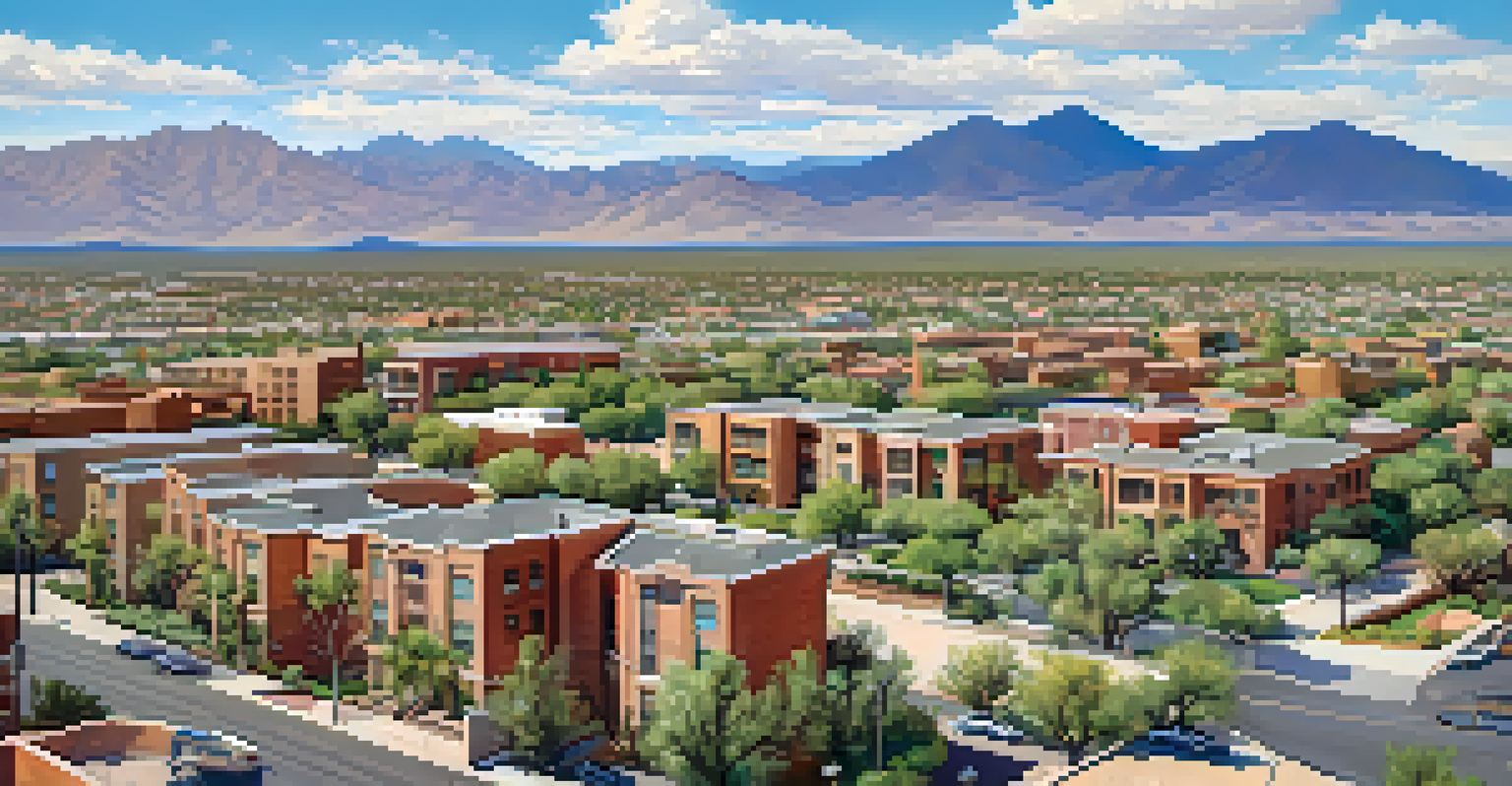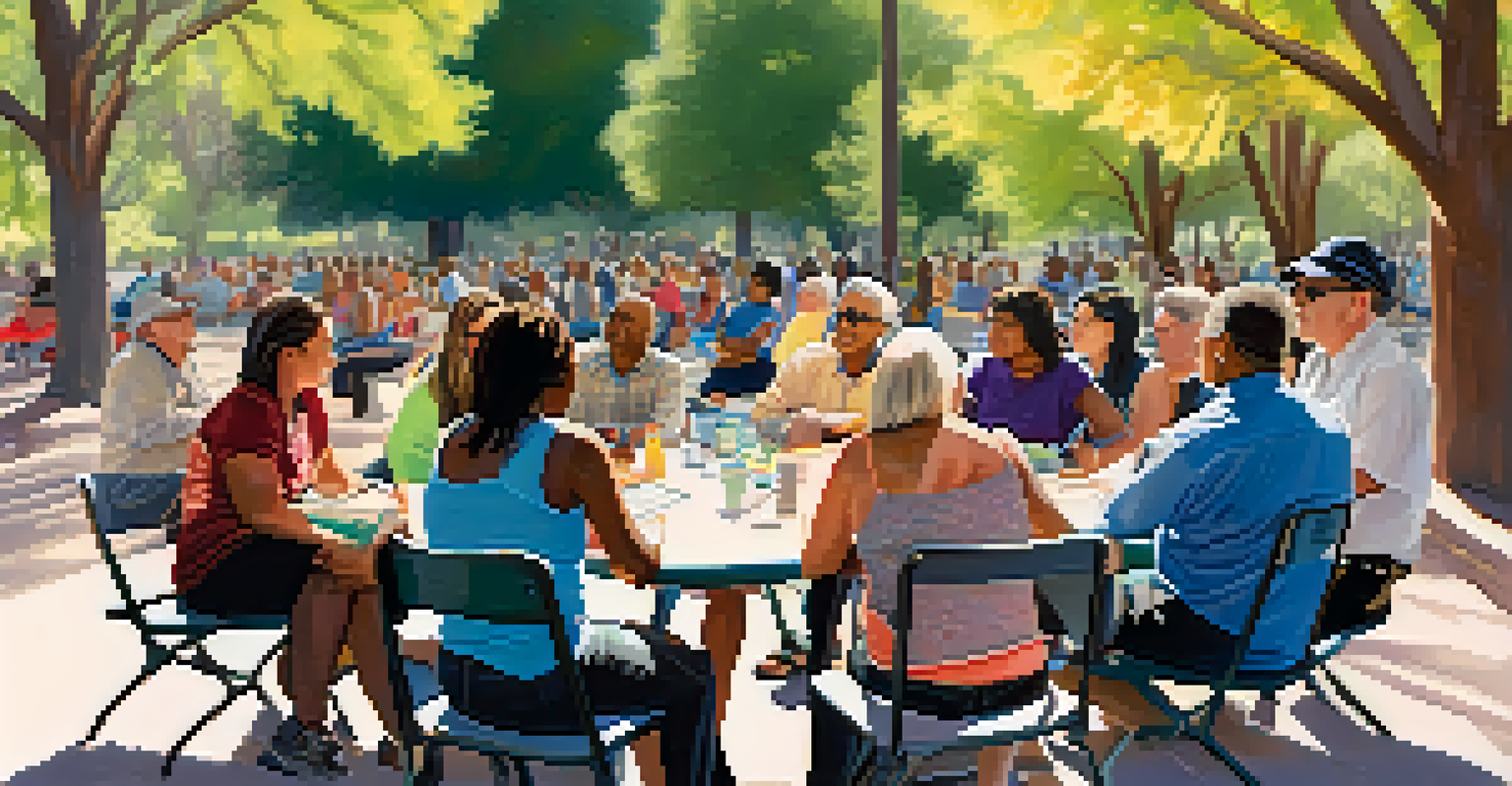Tucson's Public Transportation Challenges: Past and Present

Historical Context of Tucson's Public Transport System
Tucson's public transportation system has a long and complex history that dates back to the early 20th century. Initially, streetcars were the main mode of public transport, connecting various neighborhoods and fostering growth. However, as the city expanded, reliance on personal vehicles surged, leading to a decline in public transit use.
Public transportation is not a nice-to-have, it's a must-have for any city that wants to thrive.
In the mid-20th century, the rise of the automobile culture transformed how residents traveled. This shift not only diminished the streetcar system but also altered the urban landscape, making it less conducive to public transport. By the 1970s, Tucson faced significant challenges as public transit became underfunded and underutilized.
The impact of these changes was profound, with many residents losing access to reliable transport options. As the city sprawled, public transportation struggled to keep up, leading to a legacy of challenges that persist today. Understanding this historical context is crucial for addressing current issues.
Current State of Tucson's Public Transportation
Today, Tucson's public transportation system, known as Sun Tran, serves as the backbone for many residents. However, it faces ongoing challenges such as limited service hours and routes that don't adequately cover the city's expansive area. Many users often find themselves grappling with long wait times and infrequent service, which can be frustrating.

Moreover, budget constraints have led to service cuts and limited expansions, making it difficult for the system to adapt to the growing population. Despite efforts to modernize and improve accessibility, public perception often remains skeptical. Many residents still prefer their cars, viewing public transit as a last resort rather than a viable option.
Historical Decline of Public Transit
Tucson's public transportation system has struggled due to the rise of automobile culture, leading to underfunding and underutilization.
In response, local advocates and city officials are actively exploring solutions to enhance public transportation's appeal. This includes potential investments in infrastructure and service improvements to meet the needs of a diverse population. However, significant work remains to change long-standing habits and perceptions.
The Role of Community Engagement in Transit Solutions
Community engagement has emerged as a vital component in addressing Tucson's public transportation challenges. Local organizations have been rallying residents to voice their needs and preferences regarding public transit. This grassroots involvement not only raises awareness but also fosters a sense of ownership among users.
The best way to predict the future is to create it.
Public forums and surveys have become common tools for gathering input from residents. These initiatives allow individuals to share their experiences and suggest improvements. Engaging the community helps ensure that any proposed changes align with the real needs of those who rely on public transport daily.
Through collaboration, Tucson's public transportation system can evolve to better serve its community. When residents feel heard and involved in the process, they are more likely to embrace changes, leading to a more robust and effective transit network. This partnership between officials and the community is essential for sustainable improvement.
Impact of Urban Development on Public Transportation
Urban development plays a significant role in shaping the effectiveness of Tucson's public transportation system. As the city continues to grow, new neighborhoods and commercial areas emerge, often without adequate transit planning. This lack of foresight can lead to gaps in service, where some areas are well-served while others remain isolated.
The relationship between urban design and transit accessibility is crucial. Well-planned developments that incorporate public transport options can encourage ridership and reduce reliance on vehicles. Conversely, sprawl without transit considerations can exacerbate existing challenges, making public transportation less appealing.
Community Engagement is Crucial
Active involvement from residents helps ensure that public transportation improvements meet the actual needs of the community.
To create a more integrated system, city planners must prioritize transit-oriented development. By fostering a synergy between urban growth and public transport, Tucson can create a sustainable framework that encourages more residents to utilize transit options. This holistic approach is key to addressing the city's ongoing transportation challenges.
Technological Innovations in Tucson's Transit System
In recent years, technological innovations have begun to transform Tucson's public transportation landscape. Mobile apps, real-time tracking, and improved communication systems are making it easier for users to navigate the transit system. These advancements not only enhance the user experience but also promote greater transparency.
For instance, the implementation of real-time arrival information helps reduce uncertainty for riders, allowing them to plan their journeys more effectively. This technology can significantly improve the perception of reliability, which is a crucial factor for many potential users. When people know they won't be left waiting indefinitely, they are more likely to choose public transit.
However, the adoption of technology must be accompanied by education and outreach to ensure all community members can take advantage of these tools. Bridging the digital divide is essential, as some residents may lack access to smartphones or the internet. By addressing these barriers, Tucson can ensure that technological advancements benefit the entire community.
Funding Challenges Facing Tucson's Public Transportation
Funding remains one of the most significant challenges facing Tucson's public transportation system. With limited resources and competing budget priorities, securing adequate funding for operations and improvements is an ongoing struggle. This financial constraint often leads to service cuts and a lack of investment in new projects.
State and federal funding can be unpredictable, leaving local officials scrambling to find stable financial support. Additionally, the reliance on sales tax revenue can be problematic, particularly during economic downturns. This volatility creates uncertainty for planning and executing long-term transportation strategies.
Funding Challenges Persist
Limited financial resources and reliance on unpredictable funding sources hinder Tucson's ability to improve and expand its transit system.
To mitigate these funding challenges, Tucson must explore diverse revenue sources and innovative funding mechanisms. Public-private partnerships, grants, and dedicated taxes for transit could provide the necessary financial support. Engaging the community in discussions about funding options can also foster a sense of investment and commitment to improving public transportation.
Future Prospects for Tucson's Public Transportation
Looking ahead, the future of Tucson's public transportation system holds both challenges and opportunities. As the city grows, there is a pressing need for a more robust and adaptable transit network that meets the evolving needs of its residents. This calls for a comprehensive approach that considers the lessons learned from past and present issues.
Investments in infrastructure, technology, and community engagement will be crucial in shaping a successful future for public transit. Additionally, collaboration among city officials, local businesses, and residents can create a unified vision for sustainable transit. This collective effort can drive meaningful change and enhance the overall quality of life in Tucson.

Ultimately, the success of Tucson's public transportation system will depend on its ability to evolve and respond to the needs of its community. By prioritizing accessibility, reliability, and user experience, Tucson can set a precedent for other cities facing similar challenges. The road ahead may be complex, but with a proactive mindset, a brighter transit future is possible.